The Airbus A380, a marvel of aviation engineering, continues to grace the skies despite the end of its production. Wondering Who Flies The Airbus A380? This guide, brought to you by flyermedia.net, dives into the airlines still operating this iconic aircraft, exploring routes, fleet sizes, and future plans. Discover the airlines that still champion this aviation giant. Learn more about aviation training and news at flyermedia.net.
1. Which Airlines Currently Operate the Airbus A380?
Several airlines around the world continue to fly the Airbus A380, showcasing its enduring appeal and capacity for long-haul routes. Here’s a breakdown of the major operators:
- Emirates: The largest operator of the A380, with a significant number of active aircraft.
- Singapore Airlines: A prominent Asian carrier that utilizes the A380 on key routes.
- Qatar Airways: Reintroduced the A380 into service to address fleet shortages.
- British Airways: Operates the A380 on select long-haul destinations.
- China Southern Airlines: The sole Chinese airline with A380s in its fleet.
- Korean Air: Still operates a limited number of A380s.
- Qantas: Has brought back the A380 to serve routes like Sydney to Los Angeles.
- All Nippon Airways (ANA): Known for its uniquely painted A380s dedicated to the Tokyo-Honolulu route.
For aviation enthusiasts and aspiring pilots, keeping up-to-date with the latest aircraft in operation is crucial. Flyermedia.net offers a wide range of resources, including airline profiles, fleet updates, and industry news, to help you stay informed.
2. Emirates: The King of the A380 – How Many Do They Fly?
Emirates stands out as the world’s largest operator of the Airbus A380. With a substantial fleet, Emirates utilizes the A380 for a diverse range of routes.
- Fleet Size: Emirates boasts a fleet of 121 A380 aircraft, with a mix of active and inactive planes.
- Active vs. Inactive: Approximately 59 A380s are active, while the remaining 62 are inactive. These numbers can change based on maintenance schedules, route demands, and other operational factors.
- Route Variety: Emirates deploys the A380 on routes ranging from short hops to Jeddah (under 3 hours) to ultra-long-haul flights to North and South America, Africa, and Asia (almost 15 hours).
- European Focus: The majority of Emirates’ A380 flights are concentrated in Europe, particularly to the United Kingdom, due to high passenger demand.
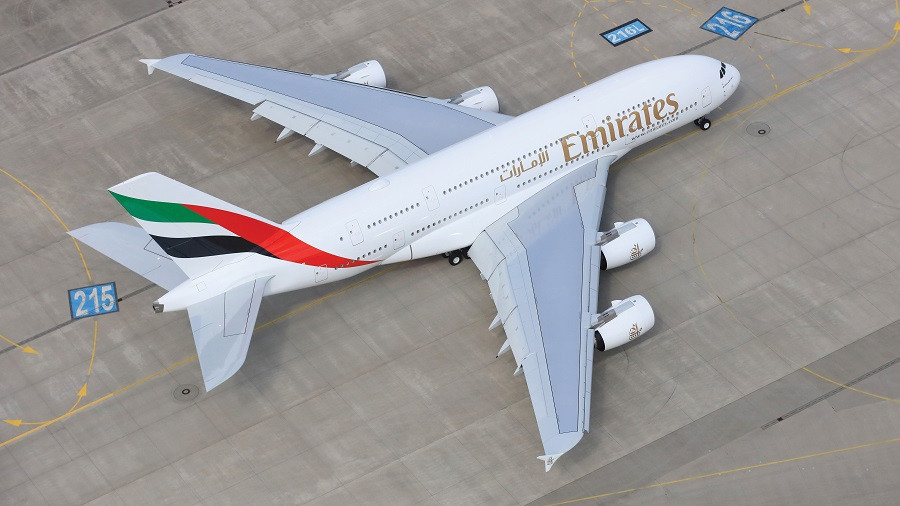 Emirates A380 in flight, showcasing the airline as the largest operator of the aircraft
Emirates A380 in flight, showcasing the airline as the largest operator of the aircraft
Emirates’ extensive use of the A380 underscores its commitment to providing a premium travel experience, with spacious cabins, luxurious amenities, and exceptional service.
3. Singapore Airlines: Which Routes Does Their A380 Serve?
Singapore Airlines, renowned for its high standards of service, strategically deploys its A380 fleet on key international routes.
- Fleet Status: Singapore Airlines has 17 A380 aircraft, with 7 active and 10 inactive.
- Key Routes: Currently, Singapore Airlines operates A380 flights from Singapore to London and Sydney. These routes are vital for connecting business and leisure travelers between Asia and Europe/Australia.
- Gradual Reopening: As Singapore gradually reopens to international travel, Singapore Airlines is expected to expand its A380 network, adding more destinations to meet growing demand.
 Singapore Airlines A380, highlighting its use on key international routes connecting Asia with Europe and Australia
Singapore Airlines A380, highlighting its use on key international routes connecting Asia with Europe and Australia
Singapore Airlines’ A380s are configured with luxurious suites, spacious business class cabins, and comfortable economy seating, ensuring a premium travel experience on these long-haul flights.
4. Qatar Airways’ Surprising A380 Comeback: Why Did They Relaunch It?
Qatar Airways initially intended to retire its A380 fleet, but a significant issue prompted a surprising reversal of this decision.
- Fleet Details: Qatar Airways has 10 A380 aircraft, with 4 currently active and 6 inactive.
- Reason for Comeback: The unexpected return of the A380 was primarily due to paint degradation issues affecting the A350 aircraft. This forced Qatar Airways to ground a portion of its A350 fleet, leading to aircraft shortages.
- Operational Routes: Qatar Airways currently operates its A380s on flights from Doha to Paris and London, two key European destinations.
 Qatar Airways A380, illustrating its surprising return to service due to A350 fleet issues
Qatar Airways A380, illustrating its surprising return to service due to A350 fleet issues
The A380’s reintroduction allowed Qatar Airways to maintain capacity on high-demand routes and minimize disruptions to its flight schedule. The airline hopes to keep the A380 active in its fleet for an extended period, contingent on operational needs and fleet management strategies.
5. British Airways A380: Where Can You Fly on It?
British Airways has been strategically utilizing its A380 fleet to serve key long-haul destinations.
- Fleet Status: British Airways operates 12 A380 aircraft, with 5 currently active and 7 inactive.
- Current Routes: British Airways deploys the A380 on flights from London to destinations such as Los Angeles, Miami, and Dubai. These routes cater to both business and leisure travelers.
- Training Flights: In late 2021, British Airways briefly operated A380 flights from London to Madrid and Frankfurt. These short-haul flights were primarily for crew training and preparation for long-haul operations.
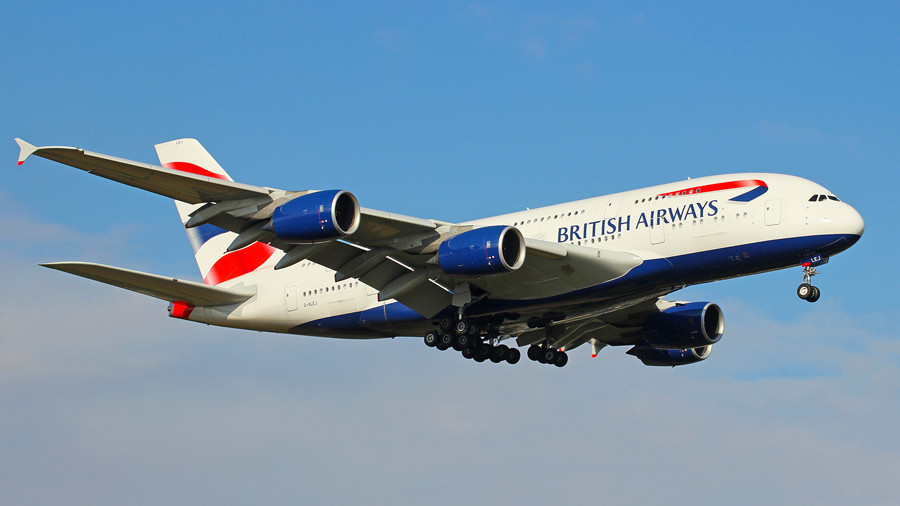 British Airways A380, showcasing its presence on major long-haul routes connecting London with key global destinations
British Airways A380, showcasing its presence on major long-haul routes connecting London with key global destinations
British Airways’ A380s offer a range of cabin options, including First Class, Club World (business class), World Traveller Plus (premium economy), and World Traveller (economy), providing passengers with a comfortable and enjoyable travel experience.
6. China Southern Airlines: Which Routes Does Their A380 Serve?
China Southern Airlines is the only Chinese carrier that continues to operate the Airbus A380.
- Fleet Composition: China Southern Airlines has a total of 5 A380 aircraft, with 3 active and 2 inactive.
- Primary Hub: The airline operates its A380s from its hub in Guangzhou (CAN).
- Key Destinations: China Southern utilizes its A380s on flights from Guangzhou to Amsterdam and Los Angeles, connecting major economic and cultural centers.
7. Korean Air’s A380: What Are Their Plans?
Korean Air is one of the few airlines still operating the Airbus A380, but its long-term plans for the aircraft are uncertain.
- Fleet Details: Korean Air possesses 10 A380 aircraft, with only 1 currently active and 9 inactive.
- Limited Operations: To maintain pilot and cabin crew proficiency, Korean Air operates the A380 on a weekly flight between Seoul and Guangzhou.
- Retirement Plans: According to reports from Korean news outlets, Korean Air intends to fully retire its A380 fleet in the coming years, aligning with a broader trend among airlines to transition to more fuel-efficient aircraft.
8. Qantas A380: Where Does It Fly and How Many Are Active?
Qantas has decided to bring back its A380 aircraft after a period of inactivity.
- Fleet Size: Qantas has 12 A380 aircraft in its fleet.
- Current Operations: Qantas has resumed A380 flights from Sydney to Los Angeles. The airline may expand its A380 network to include other destinations, depending on travel demand and the evolving global health situation.
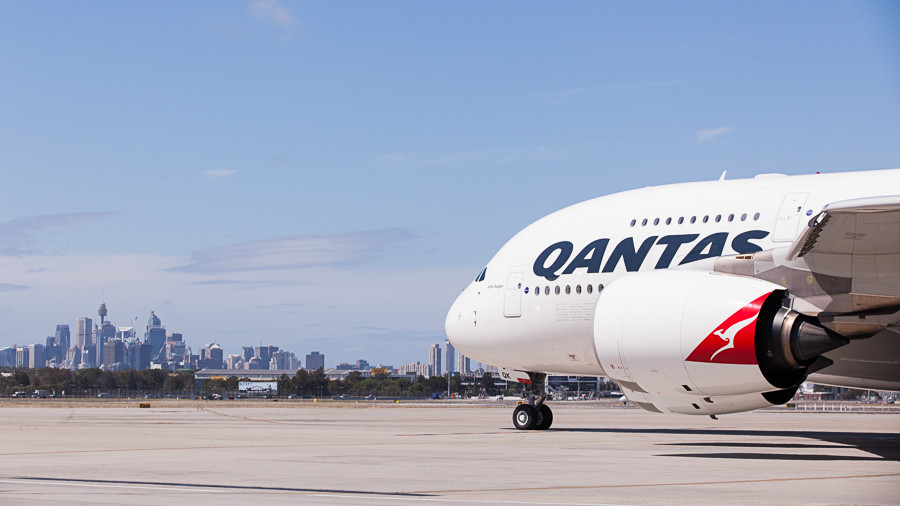 Qantas A380, demonstrating its return to service on the Sydney to Los Angeles route and potential expansion to other destinations
Qantas A380, demonstrating its return to service on the Sydney to Los Angeles route and potential expansion to other destinations
Qantas’ decision to reactivate its A380 fleet reflects its confidence in the recovery of international travel and its commitment to providing passengers with a premium flying experience.
9. Why Did Etihad Airways Stop Flying the A380?
Etihad Airways, the national airline of the United Arab Emirates, has shifted its focus to fleet simplification and the utilization of smaller, more efficient aircraft.
- Fleet Simplification: Etihad has turned to smaller aircraft like the Boeing 787 Dreamliner as part of its strategy to optimize its fleet and reduce operating costs.
- Inactive Fleet: Etihad currently has 10 inactive A380 aircraft in its fleet.
- Potential Return: While the A380s are currently not in service, Etihad may consider reintroducing them if passenger demand significantly increases.
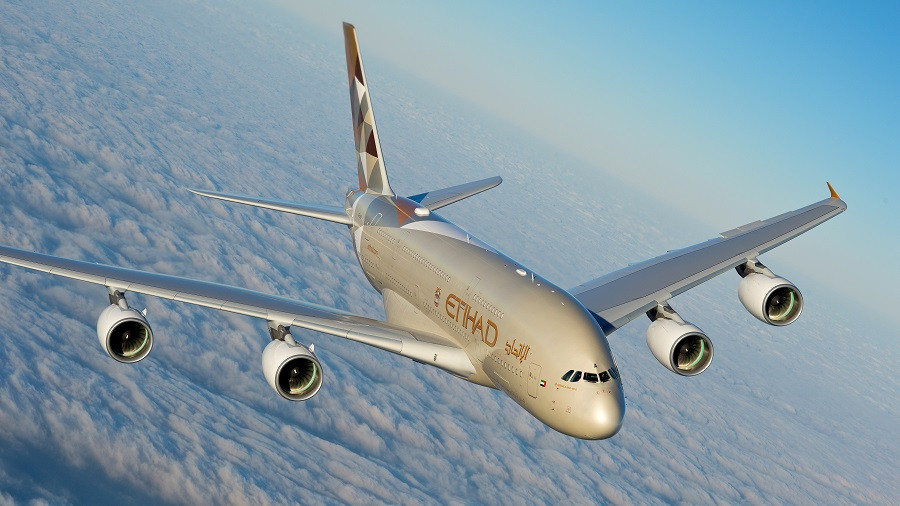 Etihad A380, illustrating its current inactive status as the airline focuses on fleet simplification and smaller aircraft
Etihad A380, illustrating its current inactive status as the airline focuses on fleet simplification and smaller aircraft
10. What Happened to Malaysia Airlines’ A380 Fleet?
Malaysia Airlines faced financial difficulties even before the COVID-19 pandemic, which led to a strategic decision regarding its A380 fleet.
- Financial Challenges: Malaysia Airlines had already decided to remove the A380 from its fleet due to financial constraints.
- Hajj Flights: The airline briefly used the A380 to transport pilgrims to Hajj in Saudi Arabia.
- Inactive Fleet: Malaysia Airlines has 6 inactive Airbus A380 aircraft in its fleet.
- No Need for Large Aircraft: Given the reduced demand for air travel during the pandemic, there is currently no need for such large aircraft in the Malaysia Airlines fleet.
 Malaysia Airlines A380, highlighting its removal from the fleet due to financial challenges and reduced demand
Malaysia Airlines A380, highlighting its removal from the fleet due to financial challenges and reduced demand
11. Thai Airways’ A380s: What’s Their Status?
Thai Airways, like Malaysia Airlines, has faced significant financial challenges, leading to a restructuring of its fleet.
- Financial Difficulties: Thai Airways has encountered financial difficulties that necessitated a drastic reduction in its fleet size.
- Smaller Aircraft: The airline is transitioning to smaller wide-body aircraft such as the Airbus A350 and Boeing 787 Dreamliner.
- Inactive Fleet: Thai Airways currently has 6 inactive A380s in its fleet.
- Aircraft Sale: The airline has announced the sale of two A380 aircraft on its website.
12. All Nippon Airways (ANA) and Their Unique A380s: What Makes Them Special?
All Nippon Airways (ANA) stands out for its unique approach to the A380, utilizing the aircraft exclusively for flights between Japan and Hawaii.
- Fleet Purpose: ANA acquired its A380 aircraft specifically to connect Japan and Hawaii, catering to the strong demand for leisure travel between the two destinations.
- Inactive Fleet: ANA has 3 inactive A380 aircraft in its fleet.
- Special Liveries: ANA’s A380s are painted in special and vibrant colors that represent Hawaiian green sea turtles (honu). Each of the three aircraft features a different color: turquoise, blue, and orange.
 ANA A380 featuring a vibrant turtle-themed livery, dedicated to flights between Japan and Hawaii
ANA A380 featuring a vibrant turtle-themed livery, dedicated to flights between Japan and Hawaii
These unique liveries make ANA’s A380s highly recognizable and add a touch of Hawaiian culture to the flying experience.
13. Which Airlines Have Retired the A380?
Several airlines have made the decision to retire the Airbus A380 from their fleets.
- Lufthansa: No longer operates the A380.
- Air France: Has retired its entire A380 fleet.
- Hi Fly: A charter airline that briefly operated a second-hand A380, has also ceased operations with the aircraft.
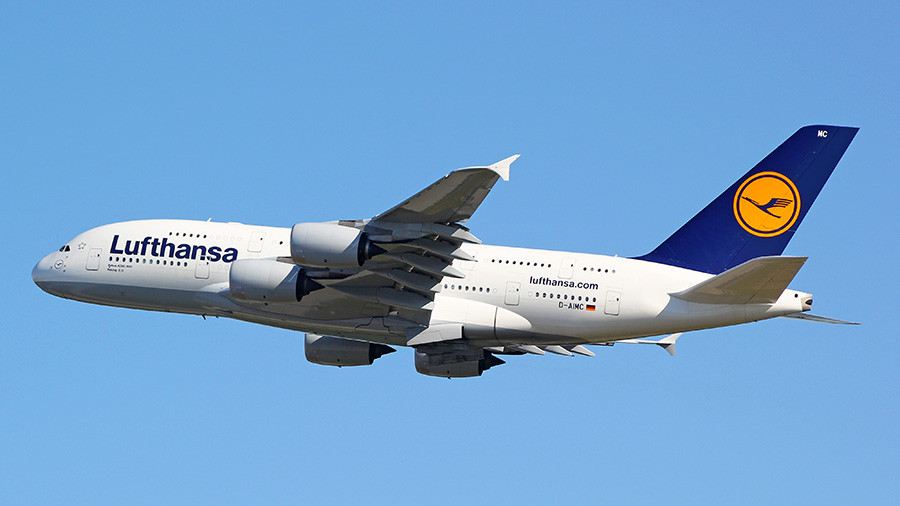 Lufthansa A380, symbolizing the airline's decision to retire the aircraft from its fleet
Lufthansa A380, symbolizing the airline's decision to retire the aircraft from its fleet
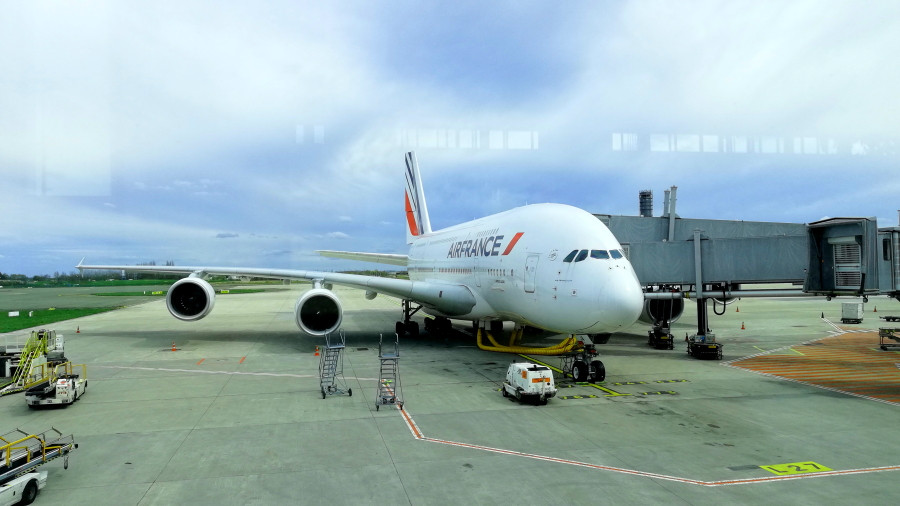 Air France A380, representing the airline's complete retirement of the A380 fleet
Air France A380, representing the airline's complete retirement of the A380 fleet
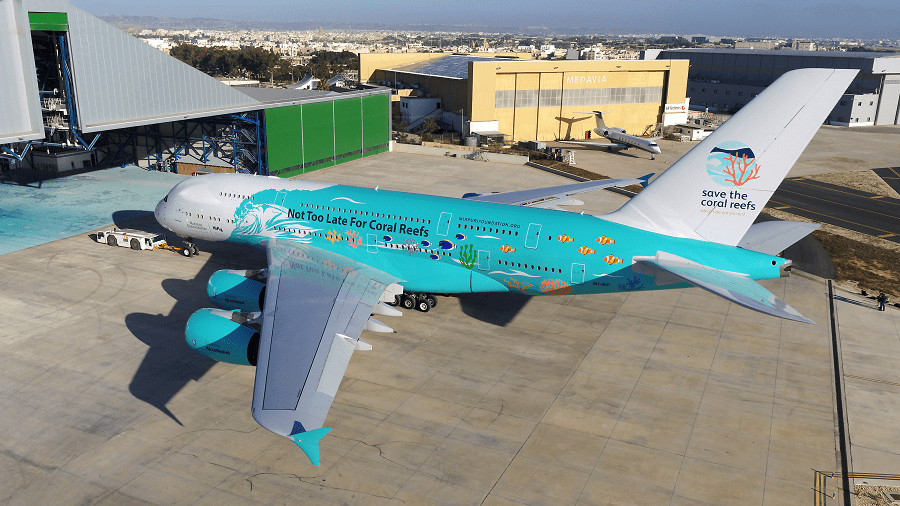 Hi Fly A380, showcasing the charter airline's brief operation and subsequent retirement of the aircraft
Hi Fly A380, showcasing the charter airline's brief operation and subsequent retirement of the aircraft
These airlines have opted for smaller, more fuel-efficient aircraft to better align with current market demands and environmental considerations.
14. Why Are Airlines Retiring the A380?
Several factors have contributed to airlines retiring the Airbus A380 from their fleets.
- Fuel Efficiency: The A380 is a large, four-engine aircraft, making it less fuel-efficient compared to newer, twin-engine models like the Boeing 787 Dreamliner and Airbus A350.
- Operating Costs: The A380’s size and complexity result in higher operating costs, including maintenance, crew training, and airport fees.
- Market Demand: The demand for very large aircraft has decreased as airlines increasingly prefer smaller, more flexible aircraft that can be better matched to specific route demands.
- Environmental Concerns: The aviation industry faces growing pressure to reduce its carbon footprint, leading airlines to prioritize fuel-efficient aircraft.
15. The Future of the A380: Will It Continue to Fly?
Despite the challenges, the Airbus A380 is expected to remain in service with several airlines for the foreseeable future.
- Emirates’ Commitment: Emirates, as the largest operator, remains committed to the A380 and plans to continue flying the aircraft for many years to come.
- Strategic Routes: Airlines like British Airways, Singapore Airlines, and Qantas will likely continue to deploy the A380 on high-demand, long-haul routes where its capacity is well-suited.
- Niche Markets: ANA’s use of the A380 on the Japan-Hawaii route demonstrates the aircraft’s potential in niche markets with high passenger volumes.
16. How Does the A380 Compare to Other Aircraft?
The Airbus A380 is unique due to its size and capacity. Here’s how it compares to other popular aircraft:
| Feature | Airbus A380 | Boeing 787 Dreamliner | Airbus A350 |
|---|---|---|---|
| Size | Very Large | Mid-Size | Mid-Size |
| Engines | 4 | 2 | 2 |
| Passenger Capacity | 500-800 (typical 544) | 242-335 (typical 290) | 300-410 (typical 366) |
| Range | 8,000 nautical miles (14,800 km) | 7,355 nautical miles (13,621 km) | 8,100 nautical miles (15,000 km) |
| Fuel Efficiency | Lower (compared to twin-engine aircraft) | Higher | Higher |
| Operating Costs | Higher | Lower | Lower |
| Typical Use | High-demand, long-haul routes | Long-haul routes, flexible for various demands | Long-haul routes, efficient for diverse markets |
The A380’s exceptional capacity makes it ideal for routes with high passenger traffic, while the 787 and A350 offer greater flexibility and fuel efficiency for a wider range of routes.
17. What Is It Like to Fly on the A380?
Flying on the Airbus A380 is a unique experience characterized by spaciousness and comfort.
- Quiet Cabin: The A380’s cabin is noticeably quieter than many other aircraft, reducing noise fatigue on long flights.
- Spacious Seating: The A380 offers wider seats and more legroom in many configurations, enhancing passenger comfort.
- Luxurious Amenities: Many airlines equip their A380s with luxurious amenities, such as onboard lounges, bars, and even showers in premium cabins.
- Smooth Ride: The A380’s size and advanced technology contribute to a smooth and stable ride, even in turbulent conditions.
18. The Airbus A380: A Feat of Engineering
The Airbus A380 is a remarkable feat of engineering, showcasing cutting-edge technology and innovative design.
- Double-Deck Design: The A380 is the world’s first full-length, double-deck passenger aircraft, maximizing passenger capacity.
- Advanced Materials: The A380 incorporates advanced materials such as carbon fiber reinforced plastic (CFRP) to reduce weight and improve fuel efficiency.
- Efficient Aerodynamics: The A380’s wing design and aerodynamic features optimize lift and reduce drag, contributing to its overall performance.
- Advanced Flight Controls: The A380 is equipped with advanced fly-by-wire flight controls, enhancing safety and stability.
19. How Can Aspiring Pilots Train to Fly the A380?
Aspiring pilots seeking to fly the Airbus A380 must undergo rigorous training and certification.
- Flight School: Start by attending an accredited flight school to obtain a commercial pilot license (CPL) and instrument rating (IR).
- Airline Training: After being hired by an airline that operates the A380, pilots will undergo extensive type-rating training specific to the aircraft.
- Simulator Training: A significant portion of the training involves simulator sessions to practice various flight scenarios and emergency procedures.
- Line Flying: Upon completing the simulator training, pilots will undergo supervised line flying with experienced A380 captains to gain real-world experience.
Flyermedia.net provides resources for aspiring pilots, including a directory of flight schools, information on pilot certification requirements, and career advice.
20. What Are Some Interesting Facts About the A380?
The Airbus A380 is full of interesting facts and figures.
- Largest Passenger Aircraft: The A380 is the world’s largest passenger aircraft.
- Wingspan: The A380’s wingspan is wider than the length of a football field.
- Passenger Capacity: The A380 can carry over 800 passengers in a high-density configuration.
- Takeoff Weight: The A380 has a maximum takeoff weight of over 1.2 million pounds.
- Production End: Airbus officially ended production of the A380 in 2021, marking the end of an era for this iconic aircraft.
By exploring these questions and answers, aviation enthusiasts and industry professionals can gain a deeper understanding of the Airbus A380 and its role in the world of commercial aviation.
Looking to soar to new heights in your aviation career? Visit flyermedia.net today for comprehensive information on flight training, airline news, and exciting career opportunities in the aviation industry. Start your journey towards the skies now Address: 600 S Clyde Morris Blvd, Daytona Beach, FL 32114, United States. Phone: +1 (386) 226-6000. Website: flyermedia.net.
FAQ About Who Flies the Airbus A380
1. Which airlines currently operate the Airbus A380?
Emirates, Singapore Airlines, Qatar Airways, British Airways, China Southern Airlines, Korean Air, Qantas, and All Nippon Airways (ANA) still fly the A380.
2. How many A380s does Emirates have in its fleet?
Emirates has 121 A380 aircraft, with about 59 active and 62 inactive.
3. What routes does Singapore Airlines use its A380s on?
Singapore Airlines flies the A380 from Singapore to London and Sydney.
4. Why did Qatar Airways bring back the A380?
Qatar Airways reintroduced the A380 due to paint issues with its A350 fleet, causing aircraft shortages.
5. Where does British Airways fly its A380s?
British Airways uses the A380 on routes from London to Los Angeles, Miami, and Dubai.
6. Is China Southern Airlines the only Chinese airline with the A380?
Yes, China Southern Airlines is the only Chinese airline operating the A380.
7. What are Korean Air’s plans for its A380 fleet?
Korean Air plans to retire its A380 fleet in the coming years.
8. Where does Qantas fly its A380, and how many are active?
Qantas flies the A380 from Sydney to Los Angeles, with plans for more routes.
9. Why did Etihad Airways stop flying the A380?
Etihad Airways stopped flying the A380 as part of a fleet simplification strategy, focusing on smaller, more efficient aircraft.
10. What happened to Malaysia Airlines’ A380 fleet?
Malaysia Airlines removed the A380 from its fleet due to financial challenges and reduced demand.

